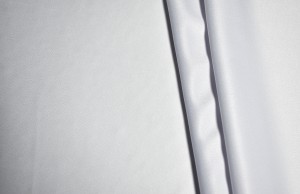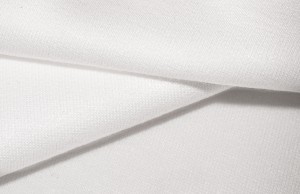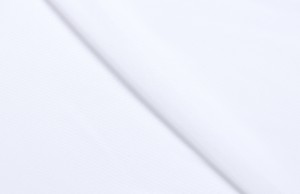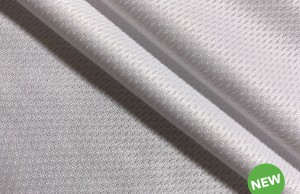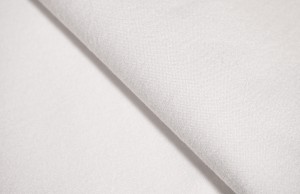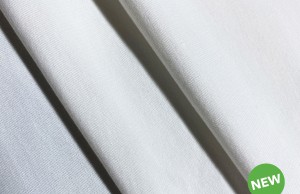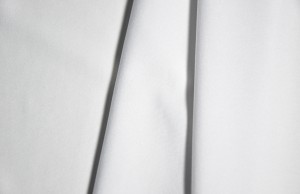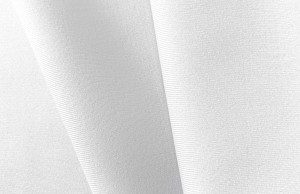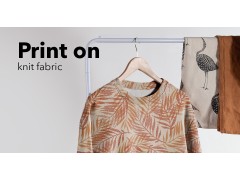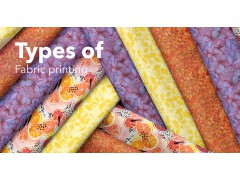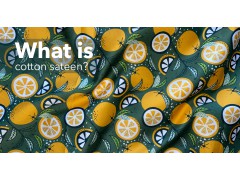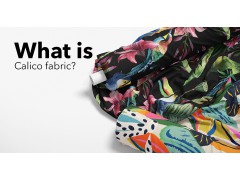The history of jersey fabric
The history of jersey fabric goes way back. As early as the Middle Ages, jersey fabrics were used, but they were mainly used for fishermen's sweaters and underwear. The name jersey comes from the island of Jersey which is part of the Channel Islands. Jersey fabric originated on these islands.
What is Jersey Fabric made of?
Jersey knit fabric can be made from different materials such as cotton, polyester, rayon, and blends of different materials. The type of material used to make the fabric will determine its properties such as stretchiness, breathability, and durability.
Pros and cons of jersey fabric
If you have worked with jersey fabrics before, you know that this fabric has many advantages, including:
- It is elastic so it moves easily with you and it assumes a perfect fit.
- A jersey fabric hardly wrinkles at all.
- The fabric feels very soft on the skin.
- It can be easily washed with both hand and machine washing.
Besides advantages, the fabric also has disadvantages, namely:
- The fabric retains moisture well, so the fabric does not dry quickly.
- Jersey fabrics cannot be washed with high temperature.
What is jersey fabric used for?
Jersey knit fabric is used for making a wide range of clothing items. It is a popular choice for making t-shirts, dresses, skirts, and leggings. The fabric is also used for making baby clothes, sleepwear, and sportswear.
Different types of jersey fabric
There are different types of jersey knit fabric, each with its unique properties. The most common types of jersey knit fabric are brushed, cotton, polyester, and stretch jersey.
Brushed Jersey Fabric
Brushed jersey fabric has a fluffy and soft texture and is therefore a soft jersey fabric. It is perfect for making cozy clothing items such as sweatshirts and pajamas. The fabric is warm and comfortable, making it ideal for cooler weather.
Stretch Jersey Fabric
Stretch jersey fabric is made from a blend of cotton or polyester and spandex. It is a stretchy fabric that is perfect for making leggings, yoga pants, and other form-fitting clothing items. The fabric is comfortable and allows for ease of movement. At House of U you can also find stretch jersey fabrics in the collection, including Peach Jersey and Vita.
Cotton Jersey Fabric
Cotton jersey fabric is made from 100% cotton. It is a lightweight and breathable fabric that is perfect for making t-shirts and summer dresses. The fabric is easy to sew and drapes well.
Single jersey
A single jersey can be recognized by the V-pattern which can only be seen on the front side of the fabric. The fabric is also thinner than for example an interlock or double jersey.
Interlock jersey
The interlock jersey is also called double jersey. This is because the V-pattern can be seen on both the front and back of the fabric. Interlock jerseys are also thicker knit and this makes the fabric very suitable for clothes you wear during cold weather.
Slub jersey
A slub jersey has a specific structure because it is woven with yarn that has thickening on localized areas. Also in these slub jerseys, the V-pattern can only be seen on the front.
Polyester Jersey Fabric
Polyester jersey fabric is made from synthetic fibers. It is a durable and wrinkle-resistant fabric that is perfect for making sportswear and activewear. The fabric is moisture-wicking, making it ideal for workout clothing. Have a look at all our sportswear fabrics.
How to sew jersey fabric?
Sewing with jersey knit fabric can be challenging, especially for beginners. Here are some tips to help you sew with jersey knit fabric:
- Use the Right Needle
Use a ballpoint or jersey needle when sewing with jersey knit fabric. These needles are designed to prevent the fabric from snagging or tearing. - Use the Right Stitch
Use a stretch stitch or a zigzag stitch when sewing with jersey knit fabric. These stitches allow the fabric to stretch without breaking the thread. - Use a Walking Foot
Use a walking foot when sewing with jersey knit fabric. This foot helps to evenly feed the fabric through the sewing machine, preventing stretching and puckering. - Use a Serger
Use a serger to finish the edges of the fabric. This will prevent fraying and give the garment a professional look.
Printed jersey fabric
The printing technique of a jersey depends on the material from which the fabric is made. We use the printing technique sublimation if the jersey is made of synthetic fibers. If the jersey is made from natural fibers, we use reactive printing.
Jersey fabric at House of U
At House of U, we have years of experience in digital printing, including jersey fabric made from synthetic fibers. These jersey fabrics can be found in our U-circular collection and are made from recycled PET bottles.
Always wanted garments made of jersey fabric with your own design? At House of U, you can choose from a variety of jersey fabrics that we can print with your design, either as a pattern or panel. You can find samples of the jersey fabrics in our Eco Fabric Kit or the fabric book.
Order our fabric book Order our Eco Fabric Kit
You can find more information on our website about how to do this. If you still have any questions, feel free to contact us. We would love to help you!






